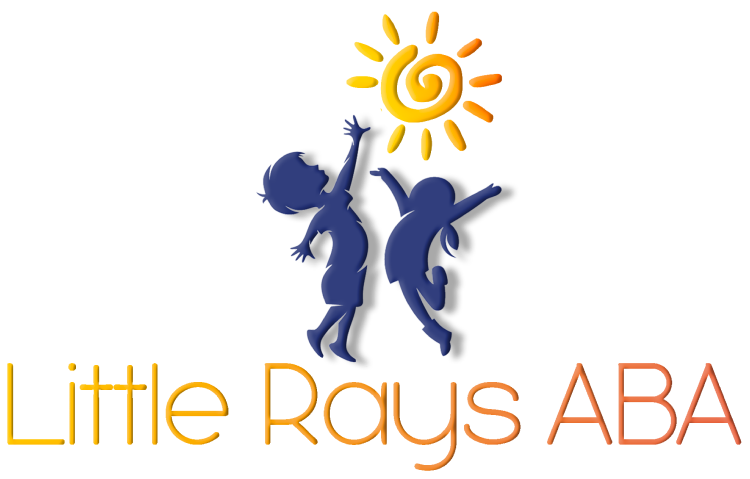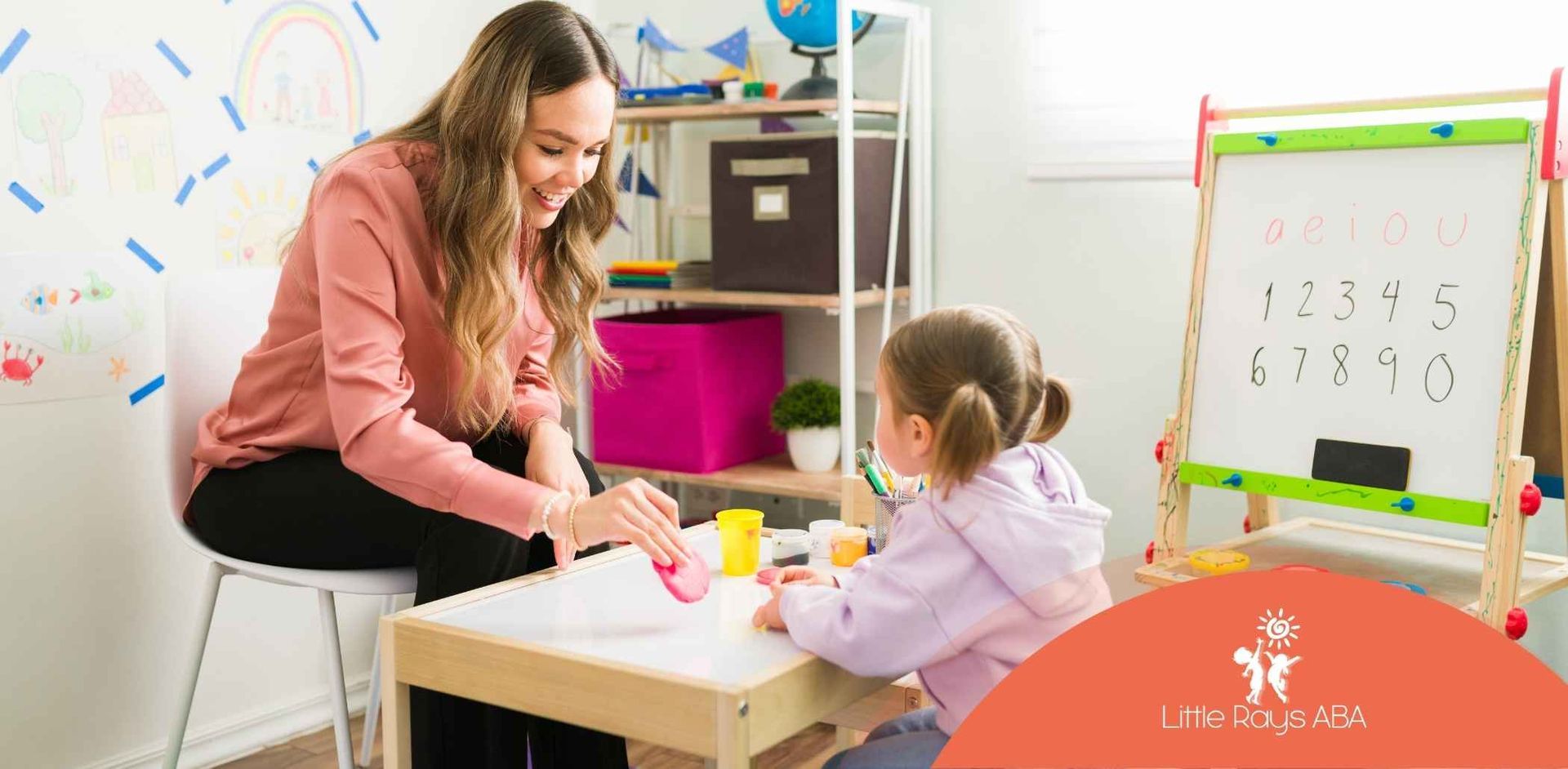
Exploring: How is ABA Therapy Different from Others?
Autism spectrum disorder can bring some hard behavioral challenges. They need chosen and careful interventions to help. Out of many therapies, ABA therapy is well-known for how organized and proven it is for behavioral disorders. This type of therapy uses applied behavior analysis. The goal is to help improve socially important skills and to lower problem behaviors.
ABA therapy gives a treatment plan that is made just for each child’s needs. Because of this, ABA therapy has become a big part of how people treat autism. There are key differences between ABA therapy and other options. To make good choices for your child, it is important to know about these differences in behavior analysis.
Understanding ABA Therapy
ABA therapy uses the science of applied behavior analysis to help with behavioral challenges and teach new skills. ABA therapists look at target behaviors and study how things in the person’s environment can affect what they do. With this information, they make intervention plans to encourage positive behaviors. The methods in ABA therapy come from behaviorism and use things like reinforcement to help shape the outcomes that you want.
Behavior analysts are an important part of ABA programs. They keep a close watch on how things are going and adjust intervention plans as needed, so they can see real progress. When kids go to therapy sessions often, ABA therapy aims to help with daily living, better communication, and improved social interactions for autistic children.
Core Principles of Applied Behavior Analysis
The principles of behaviorism are at the heart of ABA therapy. In ABA therapy, behavior analysis looks at how a person’s actions connect with what is happening around them. These types of intervention plans are built from scientific research. This makes sure that every step in the plan is based on facts and is well organized.
ABA therapy puts focus on finding which behaviors matter most in the person’s day-to-day life. Behavior analysts choose these behaviors and describe them in clear ways so they are easy to spot and measure. They use this information to come up with ways that help people do things like play with others or ask for help more often.
By using positive reinforcement, therapists help people do things that are good for them and try to make harmful actions happen less often. For example, if a child starts to use words to talk, they might get praise. This makes the child want to use words more. With regular checks, behavior analysis in ABA therapy helps people keep getting better at the actions that matter most in their lives.
Common Techniques and Strategies in ABA
ABA therapy uses different ways to help meet the needs of autistic children. One of the best methods is positive reinforcement. In this, good behaviors are rewarded so that kids will do them again. This helps children understand that what they do leads to certain results.
Discrete trial training is also an important part of ABA therapy. In this style, big skills are broken into small steps. At therapy sessions, children work on small tasks one by one to learn skills better and reach their target behaviors.
Key strategies used in ABA therapy include:
- Shaping: Rewarding behavior that is closer and closer to what we want.
- Modeling: Showing the right behaviors, often by using pictures or tools.
- Prompting: Giving hints to help get the correct answer or action.
- Fading: Slowly removing these hints as the child gets better and more independent.
ABA therapists use these intervention plans to help with tough behaviors and teach skills that make daily living easier.
Overview of Other Autism Therapies
There are many types of therapy for neurodivergent children besides ABA. Some well-known options are cognitive behavioral therapy, speech and language therapy, and occupational therapy. Each one is made to help with certain parts of developmental disorders. For example, they might focus on emotional control or teaching important life skills and functional skills.
The ways these therapies work are not the same. Each uses different methods to help with things like communication, social interactions, or building adaptive behaviors. To help their children, parents should look at what each therapy can do. They need to see if it matches both the therapy goals and their child’s needs so that the therapy has a good chance of working well.
Cognitive Behavioral Therapy (CBT)
Cognitive Behavioral Therapy (CBT) is a form of therapy that looks at how your thoughts, feelings, and actions affect each other. The goal is to help you see and change any negative ways of thinking. This can be very helpful if you have anxiety or depression. CBT is not the same as Applied Behavior Analysis (ABA therapy). While ABA therapy and behavior analysis focus on pinpointing and changing specific behaviors using data, CBT aims to help you understand your thoughts and how they make you feel. During therapy sessions, you can learn useful skills and ways to deal with problems. This helps you build adaptive behaviors, manage your feelings, and handle social situations better.
Speech and Language Therapy
Speech and language therapy supports neurodivergent children in gaining better communication skills. This helps them talk, share, and connect with other people. Therapy sessions use both words and movements to help these children say what they want or need.
During therapy sessions, children use words from daily living and take part in simple talks. There, they may repeat some words, work on speaking sounds, or learn new ways to share their ideas, such as sign language or using pictures.
The main aim of speech and language therapy is to help children talk in ways that others understand. It is to grow language skills, especially for autistic children. Good communication leads to stronger relationships, higher confidence, and a better day-to-day life.
Occupational Therapy
Occupational therapy helps autistic children be more independent. It does this by building up important skills they use every day. Intervention plans look at adaptive behaviors that children need for daily living. These can be things like dressing themselves, eating, and keeping their things in order.
Therapists make activities fit the needs of each child. They look at the child's sensory needs and any motor challenges the child has. For example, a child might learn how to hold a pencil. This helps them with school work. Sometimes, therapists include social situations. This helps children learn how to work with others.
With this support, autistic children become better able to do things on their own and feel sure in new places. Occupational therapy uses a mix of ways to help the physical, social, and thinking needs of the child. This gives a good balance so children get better in many areas of life.
Key Differences Between ABA and Other Therapies
ABA therapy helps change behavior by using rewards and looking at clear results. Other therapies focus on helping with how a person thinks or feels. For example, cognitive behavioral therapy works on changing how a person thinks, and occupational therapy helps with daily skills you need to do.
There are key differences in how each therapy works and how they are used. ABA therapy uses steps based on data and works in a set way. Other options, like speech therapy, put more focus on building communication skills. Looking at how each one works helps parents choose what is best for their child’s goals and development.
Goals and Focus Areas
ABA therapy and similar approaches are very different when you look at what they want to help with. aba therapy and aba programs work on behavior modification and help people build skills to handle life better. This often means helping someone stop problem behaviors and teaching new, useful habits. On the other hand, some other therapies try to help with how you think or how you handle feelings instead of just changing actions.
| Therapy Type | Focus Area | Example Goals |
|---|---|---|
| ABA Therapy | Behavioral Learning | Decrease problem behaviors |
| Cognitive Behavioral Therapy | Thought and Emotional Management | Navigate social situations |
| Speech Therapy | Communication | Improve language expression |
| Occupational Therapy | Functional Skills | Develop daily living independence |
But even if the aims are not the same, it takes everyone working together to get good results from the therapy. The providers, family members, and therapists all need to work in the same way to go after those shared goals. That teamwork is what helps people have better daily living and reach their best outcomes.
Methods of Implementation
The way ABA therapy works is by using clear, step-by-step and proven methods. These are changed to fit what each child needs. Behavior analysts use things like discrete trial training and positive reinforcement. They make detailed intervention plans to help build important skills. This includes things like better communication and stronger social interactions.
ABA therapists lead the therapy sessions and also help children try these new skills outside, in natural settings. This lets kids see how their new skills work in real life. ABA therapy also includes checking the child’s progress often. They look at things like measurable behaviors to see what is working. If needed, they make changes to the plans, so every child gets the most out of these strategies.
Role of Data and Measurement
Data and measurement are key parts of good therapy sessions. They help behavior analysts and others to see progress by looking at measurable behaviors. In applied behavior analysis, this way of working lets people check how well treatment plans fit each child's needs. When behavior analysts collect data often, they can see if the work is helping or not. This gives them the information they need to keep working on new skills like talking and getting along with others. By watching clear, quantifiable outcomes, they can make things better as they go. This approach helps the therapy to be more successful, and it supports the child in the best way.
Benefits and Limitations of ABA Therapy
You can see many good changes from aba therapy. This type of therapy uses behavior analysis to help autistic children with adaptive behaviors and social skills. The way it works is very organized. aba therapy lets you make treatment plans that fit each child. Some of the ways it helps are by using positive reinforcement and discrete trial training.
But, there are also some limits to it. People sometimes argue if some aba therapy methods help for a long time. Some think the therapy can be too intense for the children. By knowing both the good sides and the not-so-good sides, families can better decide about what will work for their child’s therapy.
Strengths Unique to ABA
A big strength of applied behavior analysis is the way it uses clear data and facts. This helps aba therapists track a child’s growth in a simple and exact way. By looking at behaviors you can measure, behavior analysis can help build intervention plans that fit what each child needs. This could be to help with talking with others, working on social interactions, or learning other important functional skills.
With this method, autistic children learn what they need for daily living. Also, it uses positive reinforcement so kids can let go of negative behaviors and pick up better ones. In the end, this gives children a strong start to do well over time and face life’s challenges.
Criticisms and Controversies
Concerns about aba therapy usually come up because of its strict setup and because people think it does not focus enough on giving emotional support. Some critics say that techniques like discrete trial training in aba programs might put too much focus on getting the child to follow instructions. This could make it harder for autistic children to show their true selves and what they want or need. There is also a lot of talk about the good or bad side of behavior modification, especially when the focus is on how it will affect the long-term feelings of autistic children. These issues show why it is important to keep talking and make changes to aba therapy. By doing this, aba programs can help autistic children grow both in their everyday behavior and in their emotional skills.
Comparing Outcomes and Effectiveness
Outcomes from ABA therapy show that it works well for dealing with behavioral challenges in people with developmental disorders like autism spectrum disorder. Many parents say they see big changes in their child’s communication skills, social interactions, and daily living abilities with this kind of help. But if you look at what ABA therapy does compared to other therapies, you will find different results. Some other approaches focus more on emotional skills or may use occupational therapy to help. Still, scientific research most often calls ABA therapy the gold standard for behavior modification. This is because it uses well-structured intervention plans and pays strong attention to measurable behaviors as time goes by.
Research on ABA Effectiveness
Many studies show that ABA therapy works well, especially for kids who live with autism. Research shows that applied behavior analysis helps children have more good behavior and better skills. Controlled trials show that children often get better at social interactions, communication skills, and daily living after ABA therapy. ABA therapy uses a structured way based on the principles of behaviorism. It helps make a treatment plan that fits each child’s needs. Because of this, kids often see clear improvements. This evidence makes ABA the gold standard for early intervention in children with developmental disorders.
Evidence for Alternative Therapies
Research shows there are many good ways to help neurodivergent children, not just the usual ones. Occupational therapy is one example. It helps kids with daily living and teaches them adaptive behaviors. This can also help with communication skills and social interactions.
Studies show that therapies like speech-language therapy and social skills training can be helpful, too. These focus on positive reinforcement. That's when you reward kids, so they want to repeat good behaviors.
Applied behavior analysis is often called the gold standard. But trying out other therapies can support intervention plans and be a good fit for each child. This way, every treatment plan can meet their own needs.
Choosing the Right Therapy for Your Child
The best way to pick the right therapy is to look closely at what the child needs, what they are good at, and where they have a hard time. It is good to work with people who know a lot about this, like behavior analysts. They help you learn about different ways to help, like aba therapy and occupational therapy. Parents should look at each treatment plan with care. They need to think about which way will help the child better with things like communication skills, social interactions, and adaptive behaviors. Talking openly with family members can help everyone make good choices. This way, the child’s growth and well-being come first.
Factors to Consider When Selecting a Therapy
Choosing the right therapy for your child is a big decision. You need to think about many things that can change how well it works. Start by looking at the child's behavioral challenges. This could be trouble with problem behaviors or issues with social skills. It is important to pick a treatment plan that fits your child.
Also, you want to know about the people who will work with your child. Check if the behavior analysts are certified. See if they have helped other kids with developmental disorders before. Their skill and years at this job matter a lot.
Family members also need to be a part of this choice. You should talk together about the needs of your child. Everyone should make sure that the treatment matches what the child can do. This helps the child build positive behaviors and feel better as time goes on.
Collaboration Between Therapies
When different methods come together, a child can get better support for their needs. It works well when behavior analysts and occupational therapists work as a team. They can make intervention plans that help a child with more than one area, like social skills and emotional skills. In joint sessions, family members get to watch how the therapists do things. This helps with behavior modification and keeps things the same for the child across therapies. When aba therapy is used with other approaches, it can boost communication skills and help with adaptive behaviors. This teamwork helps kids with behavioral challenges do better in a natural setting, which is good for their development and growth.
Conclusion
To sum up, when you look at aba therapy, you can see both its special strengths and its own set of challenges. Many people say that it is the gold standard when it comes to helping with behavioral and developmental disorders. Still, it is good to know where it may not work for everyone. When families pick the best therapy, they need to think about what their child needs, what might happen, and what other choices are out there. Taking the time to think in this way can help kids learn more adaptive behaviors that help them do well in everyday life.
At Little Rays ABA, we do more than follow routines—we personalize every step. As the best ABA provider in Florida, we focus on what sets ABA therapy apart: data-driven strategies, real-time behavior tracking, and meaningful progress that shows up in everyday life. Our therapists don’t just teach skills—they build confidence in children and peace of mind for families. Curious what makes ABA truly different? Reach out to Little Rays ABA and see the impact for yourself.
Frequently Asked Questions
Is ABA therapy suitable for all children with autism?
ABA therapy can help many children who have autism. But it is not right for every single child. You have to think about things like the kid’s age, how strong the symptoms are, and the way they learn best. These points matter when you want to know if aba therapy is the best choice.
Can other therapies be combined with ABA?
Yes, aba therapy can work well when you do it with other therapies, like occupational therapy or speech therapy. When you use more than one therapy together, it helps to give better results. This way, you can look at all parts of a child’s needs, and take the good parts from each treatment. It helps the child grow in many ways.
What are the main criticisms of ABA therapy?
Some people have main criticisms about aba therapy. They say it puts too much focus on making kids follow rules instead of letting them have their own choices. There is worry that this can make children feel bad or upset. Some also say aba therapy can seem too strict.
Critics point out that it may ignore what each child needs as a person. They feel that it pays more attention to behavior modification than helping a child grow and feel good.
How do parents participate in ABA versus other therapies?
In aba therapy, parents take an important part by helping put new strategies in place at home. This means they help their child practice new skills. Parents reinforce what the child learns with the therapist. Other therapies can be different. In some of these, the therapist does most of the work. The parent may not be as involved during the session. But still, these therapies need parents to help their child use these skills at home and in other places.
How do therapy goals differ between ABA and alternatives?
ABA therapy mainly works on goals for behavior modification. It is based on things you can see and measure. Other types of therapy may put more focus on emotional development or thinking skills. These other therapies often use different methods and ways to track progress to reach the same developmental goals.
Sources:
- https://www.behavior-analysis.org/
- https://www.bacb.com/bcba/
- https://www.simplypsychology.org/positive-reinforcement.html
- https://www.autismspeaks.org/expert-opinion/what-discrete-trial-training
- https://www.apa.org/ptsd-guideline/patients-and-families/cognitive-behavioral
- https://my.clevelandclinic.org/health/treatments/22366-speech-therapy
- https://wfot.org/about/about-occupational-therapy
Related Posts





